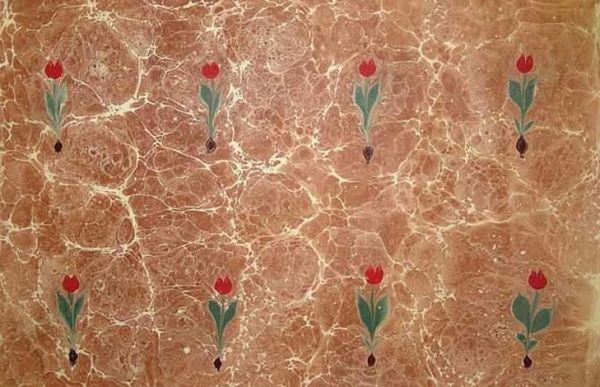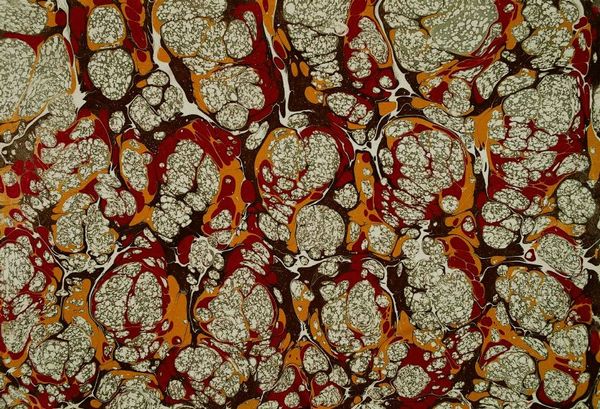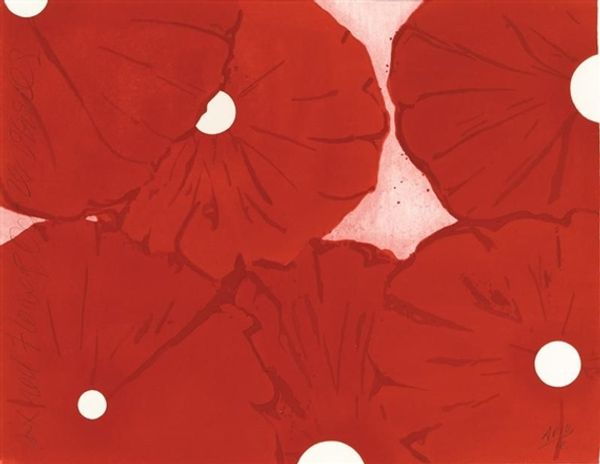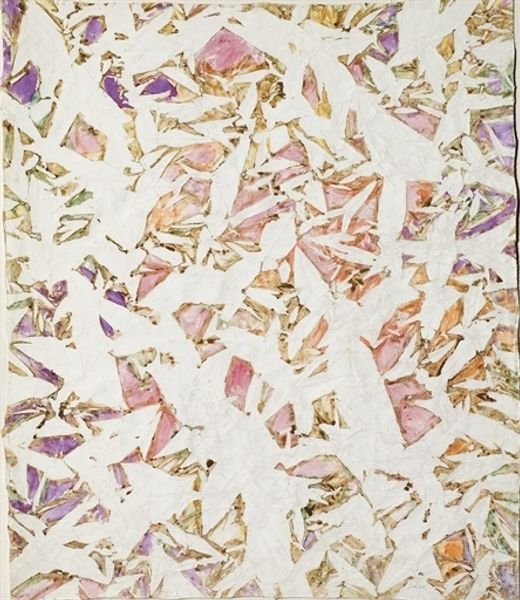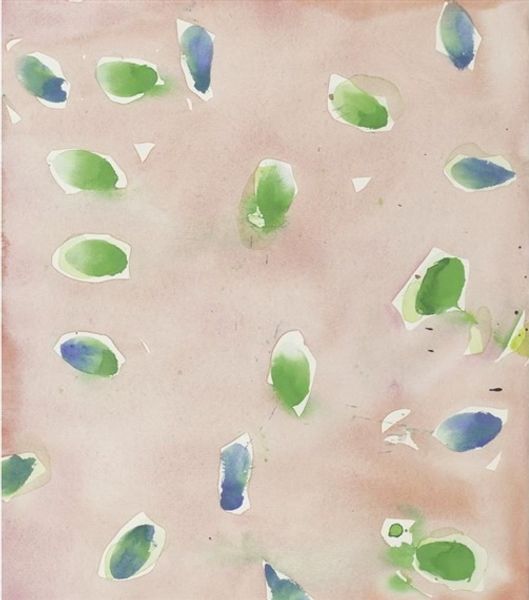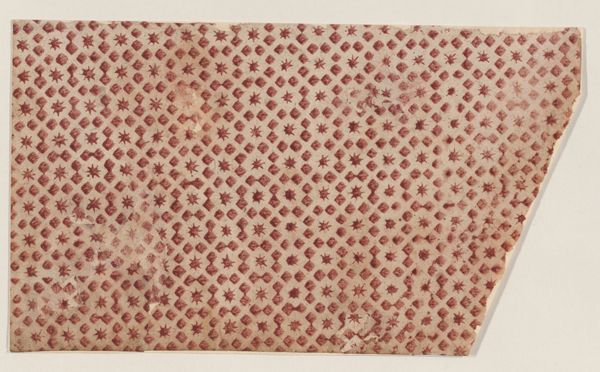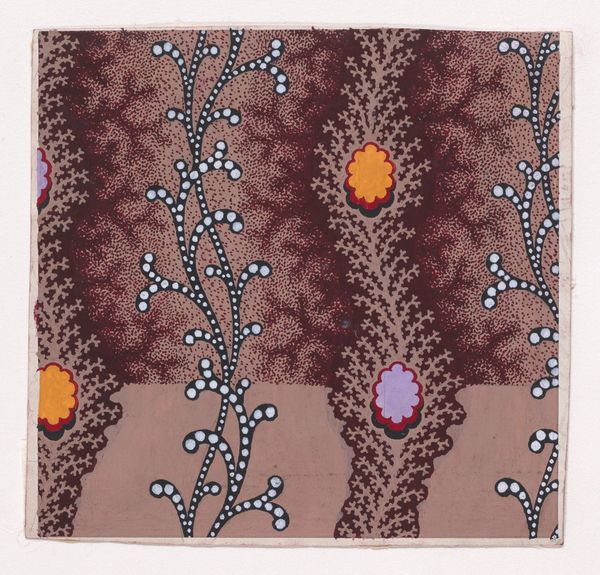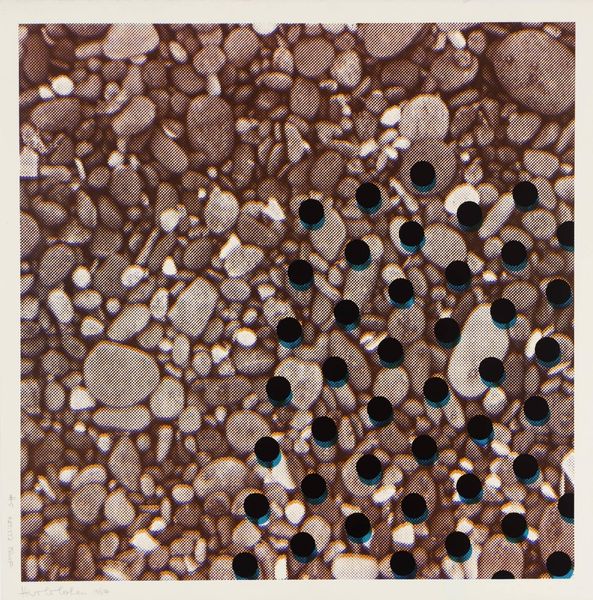
mixed-media
#
mixed-media
#
naturalistic pattern
#
random pattern
#
pattern
#
leaf
#
geometric pattern
#
abstract pattern
#
organic pattern
#
flower pattern
#
abstraction
#
pattern repetition
#
islamic-art
#
imprinted textile
#
layered pattern
#
combined pattern
Copyright: Public domain
Editor: Here we have an *Ebru* attributed to Hatip Mehmed Efendi. The piece makes use of mixed-media and presents an interesting pattern with shapes resembling leaves and hearts. The palette feels restrained. How do you interpret this work, considering its historical context? Curator: Given the attribution and medium, this Ebru places us within a rich tradition of Ottoman Turkish paper marbling. These works, often tied to Sufi orders, were not merely decorative but served a social and, at times, political function. How do you think a pattern like this might have been used, say, within an institutional setting? Editor: Maybe to adorn official documents or used as gifts? Its subtle beauty suggests status. Curator: Precisely. Think about the role of patronage within the Ottoman Empire. High-ranking officials, even the Sultan, commissioned works to showcase their power, cultural awareness, and refinement. While the vibrant reds stand out today, the choice of a seemingly simple pattern, rather than overtly figurative scenes, reveals a preference for sophisticated understatement – a sign of cultural power. Does that understanding shift your initial perception of the artwork? Editor: Yes, I was focused on the "heart" shape, maybe reading a contemporary, romantic meaning into it, but I now see it as part of a larger, carefully constructed visual language used by the elite. Curator: And we, as viewers within a specific socio-political climate, are still participating in its reception, aren't we? By understanding the context, we gain a deeper understanding of the art itself, as well as the forces that shaped its creation. Editor: Definitely food for thought! Thanks for providing some of that historical perspective and expanding my view.
Comments
No comments
Be the first to comment and join the conversation on the ultimate creative platform.
